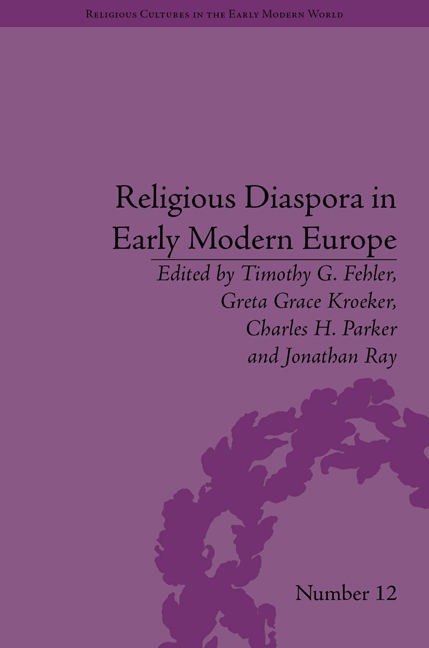Book contents
- Frontmatter
- CONTENTS
- Acknowledgements
- List of Contributors
- List of Figures
- Introduction
- Part I Tactics for Inclusion
- Part II Programmes of Restoration
- Part III Methods of Coping
- 8 Freedom as Exile: Michael Servetus and the Alumbrados
- 9 Coping with Poverty: Dutch Reformed Exiles in Emden, Germany
- 10 Anabaptist Migration to Moravia and the Hutterite Brethren
- 11 Chaos and Community: 1492 and the Formation of the Sephardic Diaspora
- 12 Displaced Intellectuals and Rebuilt Networks: The Protestant Exiles from the Lands of the Bohemian Crown
- Notes
- Index
12 - Displaced Intellectuals and Rebuilt Networks: The Protestant Exiles from the Lands of the Bohemian Crown
from Part III - Methods of Coping
- Frontmatter
- CONTENTS
- Acknowledgements
- List of Contributors
- List of Figures
- Introduction
- Part I Tactics for Inclusion
- Part II Programmes of Restoration
- Part III Methods of Coping
- 8 Freedom as Exile: Michael Servetus and the Alumbrados
- 9 Coping with Poverty: Dutch Reformed Exiles in Emden, Germany
- 10 Anabaptist Migration to Moravia and the Hutterite Brethren
- 11 Chaos and Community: 1492 and the Formation of the Sephardic Diaspora
- 12 Displaced Intellectuals and Rebuilt Networks: The Protestant Exiles from the Lands of the Bohemian Crown
- Notes
- Index
Summary
Protestant emigration from the lands of the Bohemian Crown belonged to the major waves of migration for religious reasons that occurred during the period of the Thirty Years' War. Unlike, for example, the Huguenot refugees, until recently the Bohemian exiles have seldom been discussed in the context of European migration processes of the early modern period. Despite this fact, research on exiles from Bohemia and Moravia after the defeat of the Bohemian Revolt in 1620 has a long and distinguished tradition, especially in Czech and German historiography. Since the mid-nineteenth century, historians have usually studied this emigration within the context of the broader religious history of the Bohemian Reformation, and within the political history of the conflicts between the Habsburg rulers and the revolting estates. Indeed, the re-Catholicization of the Bohemian lands and the constitutional changes which started in the 1620s caused the emigration of thousands of Lutherans, Utraquists, Calvinists, Bohemian Brethren and Anabaptists who left Bohemia and Moravia in several waves, most of these occurring between 1620 and 1628.
Members of the majority Utraquist church (which originated in Hussite times, yet many of whose followers became close to Lutheranism) and Lutherans themselves usually found new homes in the lands bordering Bohemia, mostly in Saxony, and also in Lusatia and Silesia – for a time, at least. The Unity of Brethren (Unitas Fratrum), also known as the Bohemian Brethren, a small but influential church with post-Hussite roots, was closer to Calvinism.
- Type
- Chapter
- Information
- Religious Diaspora in Early Modern EuropeStrategies of Exile, pp. 167 - 180Publisher: Pickering & ChattoFirst published in: 2014



